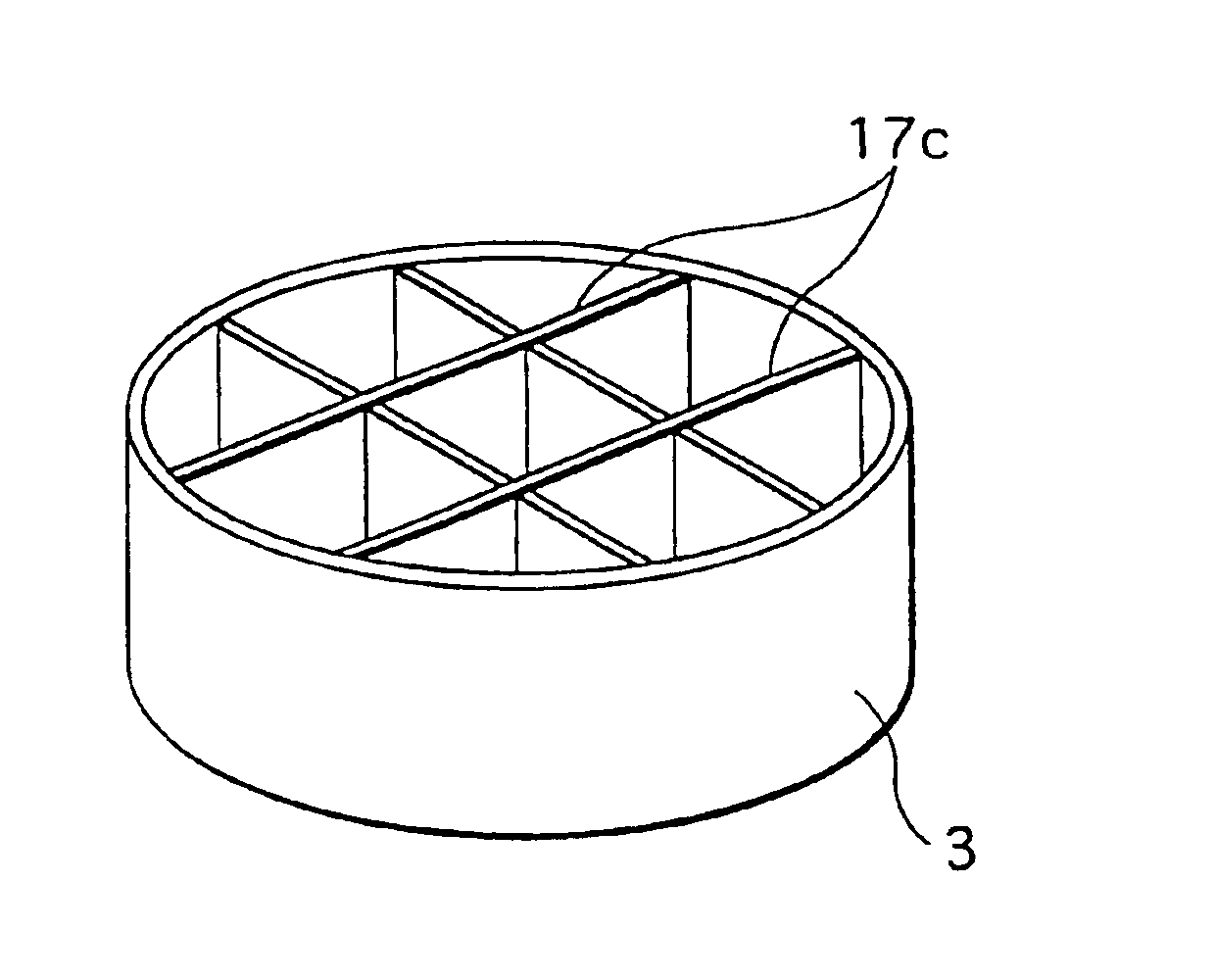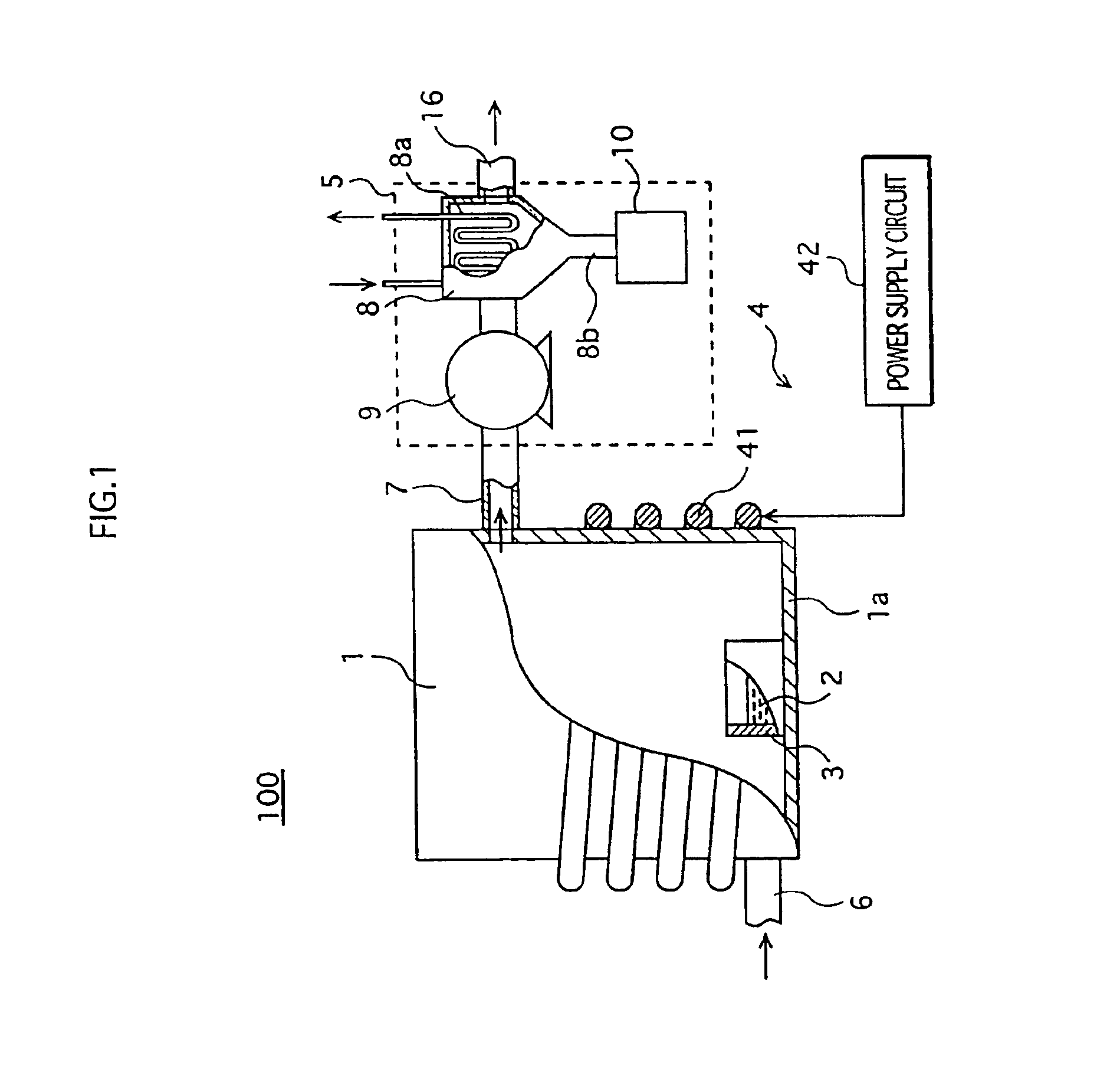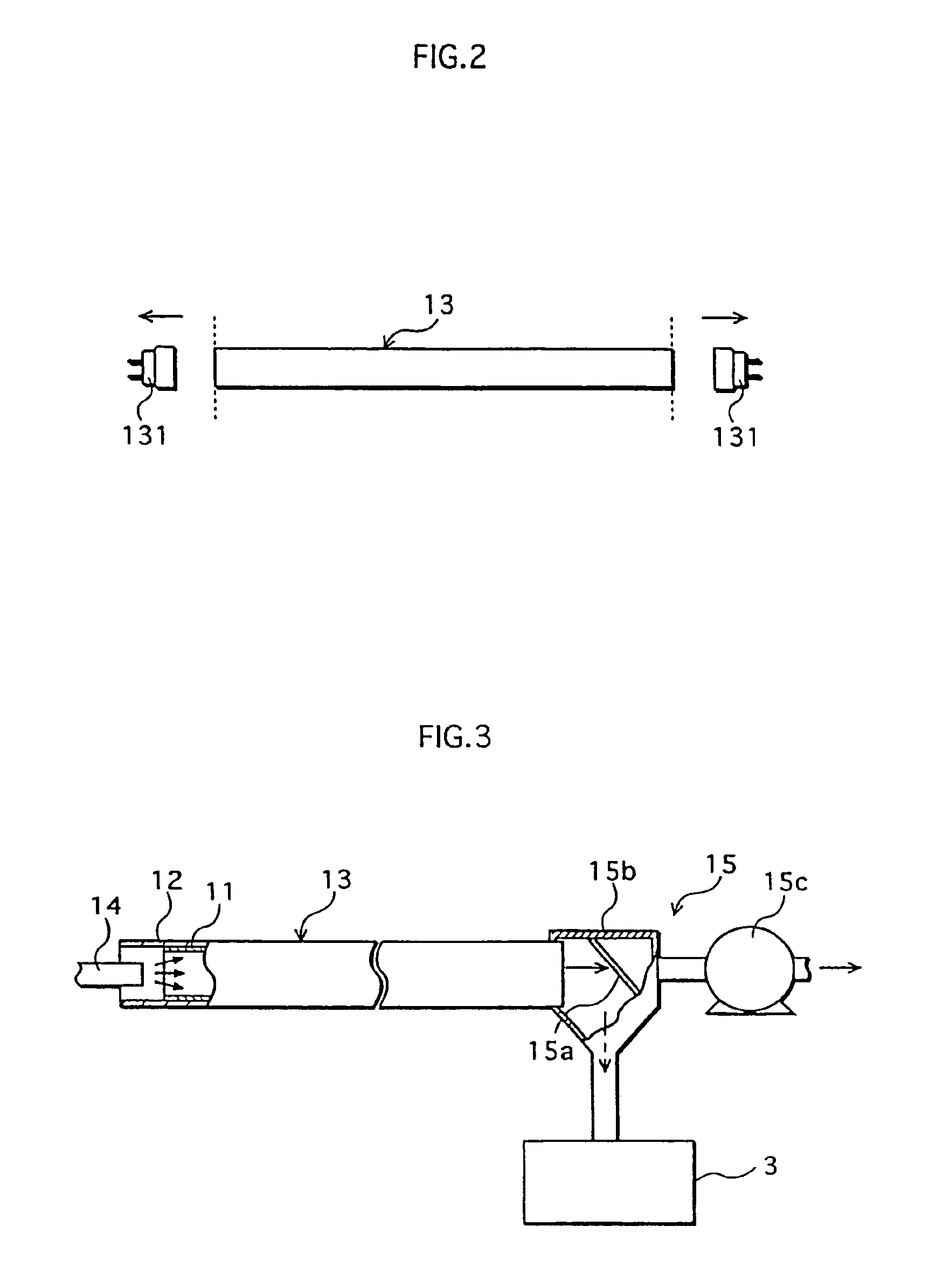Mercury recovery apparatus
- Summary
- Abstract
- Description
- Claims
- Application Information
AI Technical Summary
Benefits of technology
Problems solved by technology
Method used
Image
Examples
first embodiment
(First Embodiment)
FIG. 1 shows the construction of a mercury recovery apparatus 100 that is used to realize a mercury recovery method according to the first embodiment of the present invention.
As shown in the figure, the mercury recovery apparatus 100 includes a cylindrical reaction vessel 1 that is made of metal and can be hermetically sealed, a cylindrical distillation vessel 3 that is set on the bottom of the reaction vessel 1 and into which a mixture 2 of mercury-containing phosphor powder and an organic reducing agent is to be placed, a heating apparatus 4 that heats the mixture 2 placed in the distillation vessel 3 to vaporize and separate mercury from the phosphor powder, and a mercury collection unit 5 that pumps in the mercury vapor from the reaction vessel 1, and cools and condenses the mercury vapor to collect the mercury.
The distillation vessel 3 is made of a stainless steel and is detachable from a bottom la of the reaction vessel 1. Also, a pipe 6 for supplying gases, ...
experimental examples
The following describes experimental examples that can verify the effect of the mercury recovery method relating to the first embodiment.
First, phosphor powder was detached from a waste straight-tube fluorescent lamp 13 with rated power of 40 W whose life has been expired. Phosphors used in this waste fluorescent lamp 13 are rare-earth phosphors with the following compositions:
Red phosphorY2O3:EuBlue phosphor(SrCaBa)5(PO4)3Cl:EuGreen phosphorLaPO4:Tb, Ce
An amount of mercury contained in the detached phosphor powder, that is, phosphor powder from which mercury was yet to be separated (hereafter simply referred to as “untreated phosphor powder”) was 2800 μg per phosphor powder 2 g.
To prepare a mixture A (practical example 1), the untreated phosphor powder was mixed with an aqueous solution in which oxalic acid was being dissolved, at a rate of oxalic acid 0.4 g (20 wt %) to phosphor powder 2 g.
To prepare a mixture B (practical example 2), the untreated phosphor powder was mixed with a...
second embodiment
(Second Embodiment)
The following descries a mercury recovery apparatus according to a second embodiment of the present invention. This mercury recovery apparatus has the same construction as the mercury recovery apparatus 100 (FIG. 1) used to realize the mercury recovery method in the first embodiment, except that a dividing member 17 made of a heat conductive material is provided in the distillation vessel 3. Accordingly, the present embodiment is described focusing only on the distillation vessel 3.
FIG. 7A is a perspective view showing one example of the distillation vessel 3 in the second embodiment. As shown in the figure, three stainless cylindrical members each having a different diameter that form the dividing member 17 are placed substantially concentrically within the distillation vessel 3. FIG. 7B schematically shows the state where heat is transmitted to phosphor powder 20 within the distillation vessel 3 in the reaction vessel 1. For ease of explanation, the figure shows...
PUM
| Property | Measurement | Unit |
|---|---|---|
| Electrical conductivity | aaaaa | aaaaa |
| Diameter | aaaaa | aaaaa |
| Electrical conductor | aaaaa | aaaaa |
Abstract
Description
Claims
Application Information
 Login to View More
Login to View More - R&D
- Intellectual Property
- Life Sciences
- Materials
- Tech Scout
- Unparalleled Data Quality
- Higher Quality Content
- 60% Fewer Hallucinations
Browse by: Latest US Patents, China's latest patents, Technical Efficacy Thesaurus, Application Domain, Technology Topic, Popular Technical Reports.
© 2025 PatSnap. All rights reserved.Legal|Privacy policy|Modern Slavery Act Transparency Statement|Sitemap|About US| Contact US: help@patsnap.com



